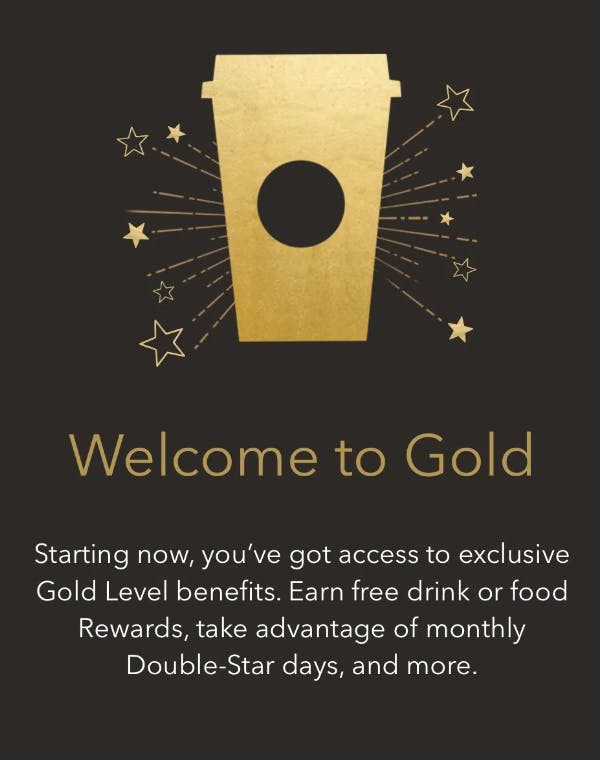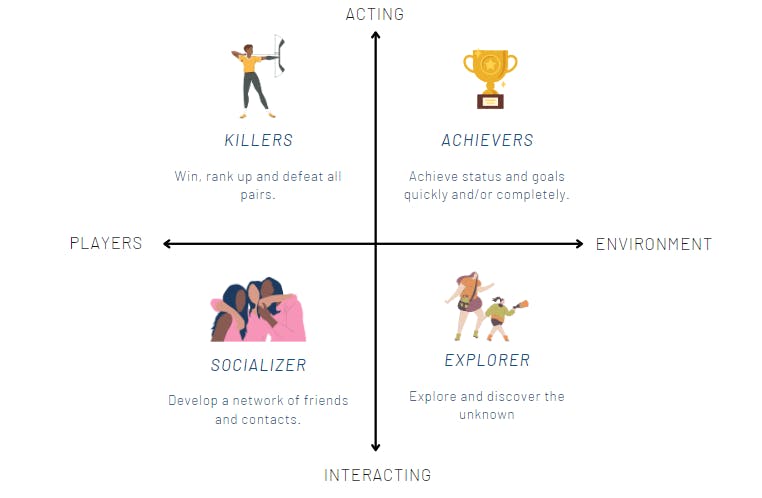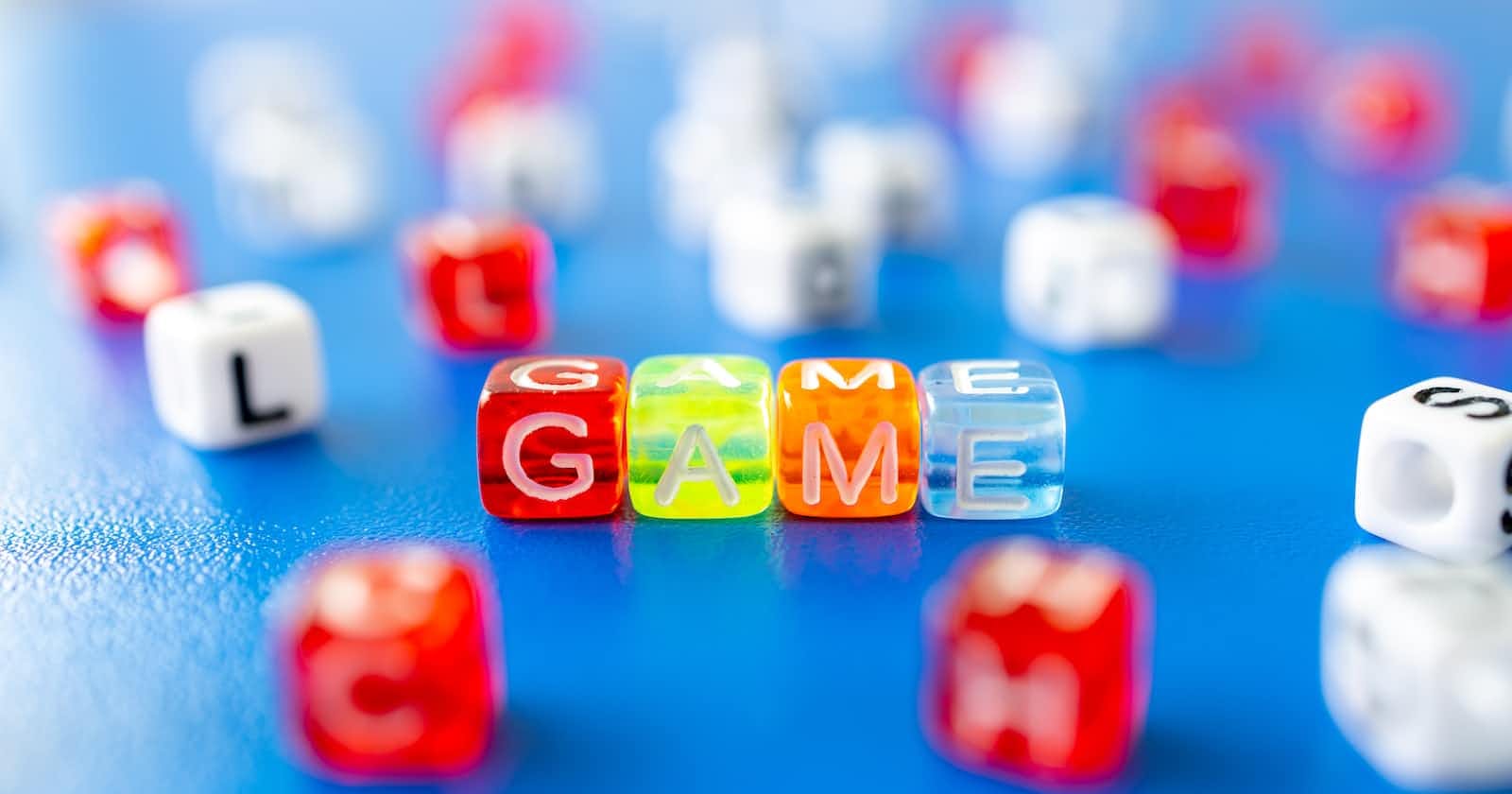What is Gamification? Gamification is a term derived from "Games" which refers to games. The term was coined by British programmer and game developer Nick Pelling in 2002, to use the logic and dynamics of games to increase people's engagement in the learning process. Gartner defines gamification as:
"The use of game mechanics and experience design to digitally engage and motivate people to achieve their goals.
This definition encompasses structural gamification, without forgetting the experience and the importance of connecting elements to the user journey. In the context of digital products, game mechanics and design elements are used to measure, influence, and reward user behavior.
Structure of Gamification In most game design frameworks or theories, elements are categorized. In the MDA model - Mechanics, Dynamics, and Aesthetics, authors Robin Hunicke, Marc LeBlanc, and Robert Zubek seek to facilitate the understanding and construction of the game with a focus on the user through 3 categories:

[Image: MDA Model - Mechanics, Dynamics, and Aesthetics]
Mechanics: These are the basic components and rules of a game. Dynamics: The player's interaction with the mechanics. Aesthetics: Emotional responses aroused in the player when interacting with the game, meaning their interaction with the dynamics.
A basketball game can serve as a playful example to grasp the meaning of each term:
Mechanics: Rules, court lines, players, duration of the game, allowed fouls. Dynamics: A basketball match between two opposing teams, involving both cooperation within the team and competition against the opposing team. Aesthetics: Players' reactions. If they win, they are likely to feel happy and motivated about the game experience. On the other hand, if they lose, they may potentially feel upset and demotivated.
Some examples of Mechanics, Dynamics, and Aesthetics in the context of gamification are:

[Image: Examples of Mechanics, Dynamics, and Aesthetics]
Gamification in Practice In gamification, it is essential to define specific tasks for users to complete and provide feedback as they progress. To structure this end-to-end process, it is crucial to keep the following items in mind:

[Image: Gamification Steps]
The Starbucks rewards program is an excellent example:

[Image: Starbucks Rewards Program]
Objective: In this program, the goal is to earn stars with each purchase to advance to higher levels and receive increasingly advantageous benefits.

Define Tasks: Each task comes with a corresponding reward.

Give Feedback: After each completed activity, the consumer receives feedback about their achievement. In this case, stars were earned as a reward.

Show Progress: The current status and next steps are displayed. The image shows that one more star is needed to advance to the next level.

Loyalty programs have become increasingly relevant for companies to engage and retain as many users as possible.
66.4% of companies report that the loyalty program has a significant impact on strategic direction. These organizations use the program to gather data for segmentation and personalized relationships. (Antavo - Global Customer Loyalty Report 2022)
Loyalty programs that treat all users the same way struggle to remain relevant because people have different tastes and behaviors, and they won't be attracted to the product in the same manner.
Types of Players In the context of games or products that use gamification elements, it is important to identify and understand the target audience because the features offered will not meet the needs or expectations of everyone. Bartle's Player Types segment player personas into 4 categories, identifying the level of relationship between the environment and people, as well as actions and interactions. The categories are: Killers, Achievers, Socializers, and Explorers.

[Image: Bartle's Player Types]
In this image, each archetype is interested in different factors that the game can provide. Although individuals may be identified with and tend to behave according to one of the quadrants, they may transition between different archetypes and possess characteristics of one or more personas.
Killers: They enjoy competing, testing their skills, and defeating opponents. They are motivated to surpass others to stay ahead of their competitors. They may be attracted to player rankings and challenges.
Achievers: They enjoy winning but also like to share their achievements with their network. They tend to be motivated by gaining points, leveling up, or reaching VIP categories - elements that can be displayed and elevate their status.
Explorers: They are curious players who like to explore and discover the unknown. Unlike Achievers, who have a results-oriented mindset, Explorers prefer the process. Unlocking features may be appealing to exploratory individuals.
Socializers: They are motivated by relationships with friends, a sense of community, and enjoy communicating. News feeds, friend lists, and chat can be interesting elements for this audience as they promote socialization and connection among people.
Player Journey By analyzing consumption behavior, available data, and collecting user feedback, it is possible to evolve interaction and continually improve the user journey. Understanding the journey at each stage is essential to maintain user engagement, as the reason why someone uses a product for the first time may differ from repeated uses when the habit is already established. The Player Journey is a model that divides the journey into 4 stages, with the goal of facilitating the identification and understanding of each stage:
Discovery: The moment when knowledge about the existence of the product or game is acquired. There is an interest in playing or using the product. Example: Downloading an app and creating an account.
Onboarding: The stage of learning about the application, its rules, and structure. This phase understands the available features and tools and begins using them. Example: Making the first purchase in the app with an exclusive coupon or discount. Note: This stage should be smooth and fast so that users learn how to use the product and feel prepared to take the first step.
Engagement: This phase focuses on habit formation. It involves creating a routine of gameplay or product usage as it involves performing repetitive actions to receive benefits. In this stage, it is essential to encourage people to access and use the product frequently. To better understand product adherence, the DAU/MAU indicator (Daily Active Users over Monthly Active Users) can be used, which indicates how often people interact with the product. Example: Starbucks rewards - the more you consume the product, the more points you earn, and you can progress to a higher level.
Retention: This phase is all about engaging the most loyal users of the product. They are the most valuable users because they consume the product the most, and it is essential to recognize this behavior with relevant rewards. At this point, when the user fulfills a game's purpose, they need to be recognized to continue playing. Example: On LinkedIn, when you update all your profile data, you receive the title of an All-Star profile, and you gain more visibility on the platform.
Gamification is an incredible way to engage and retain users. However, in practice, it needs to be well thought out and take into account the context, user journey, business pains, and opportunities. It's not just about "adding gamification." Creating a gamified product is complex, which is why many companies that use gamification in their loyalty programs typically adopt points-earning and burning processes without applying segmentation, personalization, or other gamification elements. Although it requires effort and consumer and business knowledge, it is a significant opportunity to be explored.
Interested in understanding how to create or implement gamification solutions in a digital product? Check out this step-by-step guide I've prepared, which can help you.


